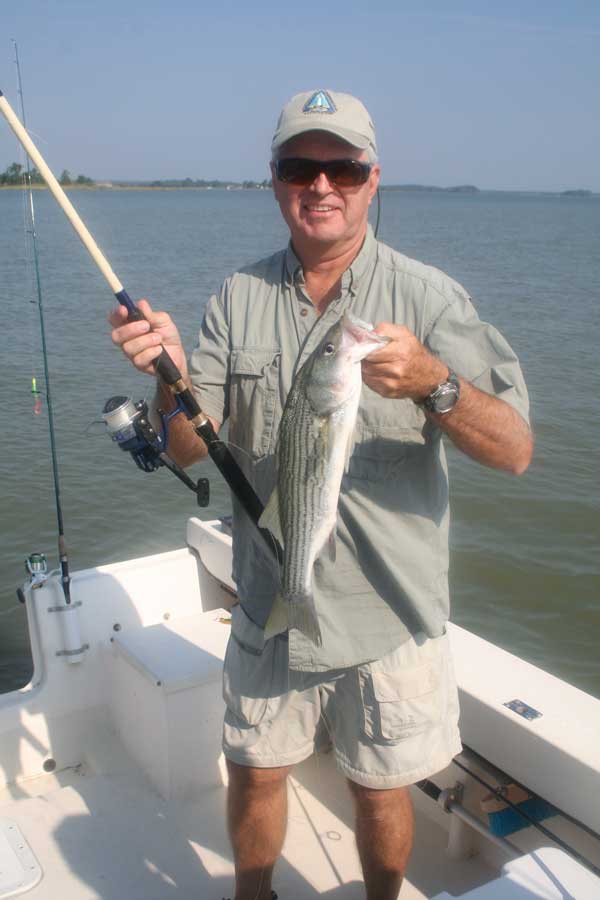As summer winds down, blues and rockfish begin to move out of the rivers and creeks along with baitfish, and this ends up with the bait on the surface being attacked from below by the bigger fish and from above by the birds. This is about as exciting as fishing gets, and watching as your surface lure gets attacked only adds to the entertainment value.

The run-and-gun technique will provide plenty of action, and will also draw some very stupid people who will run through the schools of breaking fish or try to get between you and the action, thereby killing your fun. Screaming at the morons will make you feel better, but in my experience, will have no effect on their behavior. All you can do is move away and try to beat them to the next school of breaking fish.
Another approach is to wait for them to leave and drop down with Stingsilvers to the fish that may remain on the bottom after the fish on the surface have scattered. Quite often these will be larger rockfish than the ones feeding on the surface. It only takes a few minutes to try this technique. If you don’t get any hits and your SONAR is blank, head out to the next school of breaking fish.
When you see breaking fish, try to come to them up-tide or upwind so you will drift towards the school without using the motor. If you do this right and no other captain messes you up, you can find yourself surrounded by breaking fish. At this point all you have to do is make a flip cast and you will be hooked up.
A quieter approach is casting to the shoreline of rivers, creeks, and bays. Rock rip-rap is good structure, as is vegetation right on the edge of a steep drop-off.
Cast the lure as close as possible to the structure and let it sit on the surface for a few seconds. Some anglers like to retrieve a surface popper with a stop-start motion, letting it rest for a few seconds before the next series of pops. Others keep the lure moving all the way back to the boat. Try both techniques until you discover what the fish want.
Since most of the bluefish and stripers you will catch on the surface will be less than 30 inches, you don’t need heavy tackle. I use a spinning outfit with 10- or 12-pound mono line and a short, six- to eight-inch, 30-pound Fluorocarbon leader. I tie the leader to the running line with an Albright knot and attach either a Coast-Loc or Scientific Angler snap to the end of the shock leader. Never, ever use wire leaders.
I do recall a day when we were fishing for fun at the Third Island of the Chesapeake Bay Bridge-Tunnel. I was casting my Stan Gibbs popper on an outfit exactly like the one I described above when I saw this huge form rise up from the depths. The rockfish inhaled my popper and took off. After about 15 minutes I brought her to the net. The fish measured 40 inches and was released.
While it is true that breaking fish may show up at any time of day, the best action usually occurs at daybreak or dusk. I like to be there at daybreak since the morons usually sleep in. The Bay is normally as calm as it is going to get at this time of day, and that is another plus factor.
If you run by rock rip-rap or vegetation along a deep channel, make a few casts on your way out to the Bay. Once in open water, scan for signs of diving birds and head for them as soon as you see the activity. With luck you will be the only boat around and can have all this good fun to yourself.
I use surface lures from different companies. As I mentioned, I still have a few from Stan Gibbs and Bob Pond, but newer ones from Tsunami, Yo-Zuri, Storm, or others will do the job. The walk-the-dog type surface lures are also effective, but I must admit, I have yet to try them. Unweighted soft plastics can be very good when worked across still water.
Catching blues and rockfish on the surface is exciting and can be very productive. Get up early and give it a good try this year.
By Eric Burnley